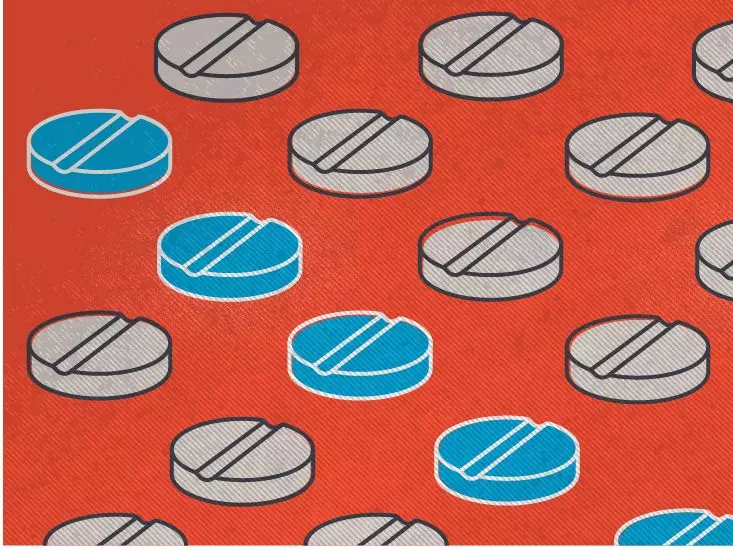Rubraca, a notable player in the realm of targeted cancer therapies, is often highlighted for its efficacy in treating certain cancers, particularly ovarian and prostate malignancies. As with many pharmacological agents, it carries the burden of potential side effects, creating a delicate balancing act for both healthcare providers and patients. A thorough understanding of these side effects not only prepares patients for what to expect but also empowers them to seek timely medical intervention when necessary.
The Spectrum of Side Effects
When one begins treatment with Rubraca, it is crucial to be aware of both common and serious side effects that can arise. Common experiences for ovarian cancer patients include nausea, fatigue, and skin reactions. Meanwhile, those targeting prostate cancer might experience similar gastrointestinal issues alongside weakness and changes in liver enzymes. These effects can be troubling, but most are temporary and manageable with the right strategies and proactive communication with healthcare providers.
However, what may begin as a mild side effect can escalate, leading to more serious concerns, including anemia and thrombocytopenia. Anemia can result in noticeable fatigue and weakness from decreased oxygen levels in the bloodstream, while thrombocytopenia can increase bleeding risks, manifesting in unusual bruising or gums that bleed more easily. Both scenarios require vigilant monitoring and a robust dialogue with a physician to adjust dosages or explore alternative treatments.
Managing Mild Side Effects
The proactive management of side effects is an essential part of the treatment journey. For instance, medications such as antiemetics can be invaluable for warding off nausea and vomiting, allowing patients to maintain their quality of life. Additionally, dietary modifications may be beneficial; integrating smaller meals and avoiding heavy, spicy foods can minimize digestive distress. It’s also essential to stay hydrated, which supports overall health.
In cases of skin sensitivity, patients are advised to adopt sun protection strategies rigorously. This includes wearing appropriate clothing and using broad-spectrum sunscreen to counteract increased susceptibility to sunburn. Awareness and preparation can significantly alleviate the discomfort associated with these common but manageable setbacks.
Recognizing Serious Side Effects
On the contrary, serious side effects from Rubraca cannot be overlooked. Although many patients may experience minor issues, severe reactions warrant immediate medical attention. Symptoms of an allergic reaction—such as swelling, difficulty breathing, or rashes—should be treated as emergencies. Understanding the distinction between mild and serious side effects is vital; patients need to be encouraged to reach out to healthcare professionals without hesitation when serious symptoms arise.
The FDA’s commitment to patient safety underscores the importance of reporting any adverse effects. This proactive approach aids in refining patient safety data and can ultimately lead to enhanced therapeutic protocols. It is vital for patients to understand that their experiences contribute to a broader understanding of the medication’s efficacy and safety.
Informed Decision-Making
Before initiating treatment with Rubraca, patients should engage in candid discussions with their healthcare providers. Patients must reveal their complete health history, as previous allergic reactions or conditions like pregnancy and breastfeeding can significantly influence treatment decisions. Informing healthcare teams about individual health nuances enables a tailored approach, enhancing the chances of a successful therapeutic outcome.
The patient’s journey with Rubraca is multifaceted—embracing both the challenges posed by side effects and the strategies to manage them. Support systems, which may involve caregivers or support groups, can play a fundamental role in navigating these complexities.
Empowering Through Knowledge
Staying informed and actively participating in one’s treatment decisions fosters a sense of ownership over health. By arming themselves with knowledge about potential side effects and engaging openly with their healthcare team, patients are better positioned to address issues as they arise, ensuring that their treatment remains effective and tolerable.
Furthermore, community resources, including online platforms and forums, can provide valuable support and anecdotal experiences from others undergoing similar treatments. Sharing personal experiences, particularly regarding side effects, can provide insight and foster resilience among patients.
Understanding and managing the side effects of Rubraca is a critical component of the treatment process. By recognizing both common and serious side effects, patients can engage proactively with their healthcare teams. Knowledge is power, and in the complex realm of cancer treatment, it is a crucial tool that can lead to better health outcomes and an improved quality of life.

